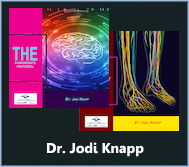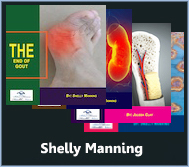Future studies on erectile dysfunction (ED) in the elderly are set to fill some key gaps in our knowledge of the condition, its etiology, and its treatment. With the aging population, ED will increasingly become a common problem, occurring in a high percentage of older men. Studies will continue to advance to enhance prevention, therapeutic options, and overall management of aging men with ED. Following are some of the important areas where future studies will be likely to make substantial progress:
1. Unraveling the Process of Aging and Its Effect on ED
Vascular Aging: As individuals age, the blood vessels naturally change, such as rigidity of the arteries and decreased endothelial function. A study on how these changes directly impact erectile function is essential, especially how the vascular system and blood flow are involved in ED among the elderly.
Hormonal Changes: Testosterone levels decline with increasing age, yet the relationship between testosterone and erectile function in ageing men is not clear. Future research may examine the correct levels of testosterone to maintain erectile function and whether testosterone replacement therapy is useful for managing ED in ageing men.
Neurological Causes: Neurological changes with aging might contribute to ED. Future research may take into account how neurodegenerative disease (e.g., Alzheimer’s or Parkinson’s disease) or other changes in nerve function associated with age influence erectile function and sexuality.
2. Examining Multimorbidity and ED
Chronic Conditions: Older adults tend to have multiple chronic illnesses (e.g., heart disease, hypertension, diabetes), and these are contributory to ED. Research on how these conditions interact to impair sexual function will be required. Understanding combined effects of these diseases on erectile functioning may lead to more effective treatments.
Polypharmacy: Elderly people tend to be on several medications, most of which have side effects that contribute to ED. Future research will examine how medication interactions affect sexual health and develop strategies for controlling ED without detracting from treatment for other disorders.
3. Psychological Factors and ED
Mental Health and ED: Depression, anxiety, and ED in the elderly remains a strong area of interest. It may be of interest in future studies to investigate the effectiveness of mental health treatments such as CBT or mindfulness-based treatments on enhancing erectile function in men with psychological factors contributing to ED.
Social and Relationship Problems: Social isolation, loneliness, and relationship adjustment may have an impact on erectile function in older men. Research might investigate the impact of improving social and emotional well-being on ED outcomes and how relationship treatment and couples therapy can enhance sexual health.
4. Emerging and New Treatments and Technologies
Gene Therapy and Stem Cell Research: Gene therapy and stem cell therapy are promising new alternatives for the treatment of ED as technology advances. Research may include how regenerative medicine can restore erectile tissues that have been damaged or stimulate neovascularization (new blood vessel formation) to improve erectile function in aging men.
Penile Prostheses and Implant Devices: While penile implants are very effective for the majority of ED patients, there is still room for improvement in terms of biocompatibility, comfort, and performance. Future studies may include the creation of more efficient and minimally invasive devices, such as wearable devices that monitor and regulate erectile function in real-time.
Pharmacological Advances: Research continues to develop new drugs addressing the causative elements of ED, i.e., drugs with fewer side effects or higher efficacy in older adults. As an example, newer PDE5 inhibitors or drugs targeting the cure of endothelial dysfunction may be explored.
5. Sexual Health and Quality of Life
Patient-Centered Research: It is essential to understand how ED influences the quality of life among older adults, such as their mental and emotional health. Future research can investigate how ED influences overall relationship satisfaction, self-esteem, and life satisfaction, and how their quality of life can be improved by treating ED.
Couple Dynamics: Future research may investigate the role of the partner in managing ED in older men and women, such as how communication within the relationship, sexual satisfaction, and shared treatment goals between partners influence outcomes. Research may explore how couples can work together to maintain intimacy in the face of ED.
6. Cultural and Societal Factors
Cultural Attitudes Toward Sexuality and Aging: Cultural attitudes toward sex and aging also vary from culture to culture and may affect the attitudes of older adults toward and the way they react to ED. Consideration of cultural sexual beliefs during later life and ED stigma may help in offering interventions and treatment to varying populations.
Education and Awareness Programs: Greater public education regarding ED and its treatment in older adults is necessary. Follow-up studies would be able to explore the effectiveness of health education campaigns to eliminate stigma and encourage older adults to seek treatment.
7. Personalized Medicine and ED
Biomarkers and Genomic Research: With genetic and molecular data increasingly accessible, studies can explore the possibility of applying personalized medicine to treat ED in older adults. By identifying genetic markers or some biomarkers indicative of risk for ED, researchers can tailor treatment according to the patient’s personalized health profile, leading to more effective and targeted treatments.
Lifestyle and Behavioral Interventions: Research into the role of lifestyle factors (e.g., nutrition, physical activity, and sleep habits) in the management of ED will increase. Such studies might involve a study of the best behavioral treatments that optimize erectile function in elderly men, particularly non-responders to traditional pharmacologic therapy.
8. Prevention and Early Intervention
Prevention of ED in Older Adults: Future research will likely focus most significantly on prevention of ED in older adults, particularly through early intervention against risk factors in life. This can be done through lifestyle modification interventions or early screening for individuals at heightened risk of developing ED due to chronic diseases, medications, or other etiologies.
Public Health Approaches: Understanding the role of public health policy and community-based programs in ED prevention may provide new insights into sexual health management among older adults. This might include promoting health screening, improving access to treatment, and overcoming social and healthcare inequities in sexual health.
Conclusion
The future of erectile dysfunction (ED) research in the aging population is bright for better understanding and treatment of this common condition. Advances in personalized medicine, psychological therapy, and emerging technologies will contribute significantly to the management of ED in older adults. Greater focus on quality of life, cultural concerns, and prevention will also help older adults enjoy a healthy and satisfying sexual life as they age.
As research evolves, the aim will be not just to cure ED, but to improve sexual well-being, health, and quality of life in older people with this condition.
The market for erectile dysfunction (ED) treatment has experienced significant growth in recent years, and it is probably going to continue for several key reasons. With a rise in awareness about sexual health, an increasing aging population, improved treatment methods, and emerging technologies, ED treatment markets are expanding across the globe. The following are some points regarding the growth in the ED treatment market:
1. Aging Population
Demographics: The global population is aging, and increasingly men over the age of 40 are afflicted with ED. This is one of the strongest drivers for market growth because ED is common in older men, usually due to age-related conditions such as hormonal changes, vascular issues, and chronic diseases.
Impact: As the baby boomer generation ages, demand for ED treatments will increase. The global geriatric population will keep growing, expanding the market even further.
2. Increased Awareness and Acceptance
Stigma Reduction: ED was a stigmatized illness earlier, but the social stigma towards sexual health diseases has reduced over time. Increased public awareness programs and increased openness to discussing sexual health have promoted more men seeking treatment for ED.
Online Platforms: Growing popularity of online health platforms and telemedicine has enhanced the ease with which individuals are now able to search for advice and treatment for ED in a private manner. This is generating the market, with increasing numbers of men stepping forward and addressing the issue and seeking solutions.
3. Innovative Treatment Options
Pharmacological Therapies: PDE5 inhibitors (i.e., Viagra, Cialis, Levitra) remain the most common treatment for ED. These medications have been very successful and are likely to continue to be a growth driver for the market in the future. Generic versions of these medications have now entered the market, making these treatments cheaper, further expanding the market to reach more individuals.
Non-Pharmacological Therapies: Besides oral medications, new non-surgical treatments are becoming increasingly popular. For example:
Shockwave Therapy: Low-intensity shockwave therapy (LiSWT) has been shown to improve erectile function by increasing blood flow and tissue growth.
Penile Implants: Although surgical, penile implants are a dependable option for advanced ED and are becoming increasingly more advanced in design and function.
Vacuum Erection Devices: Vacuum erection devices, which cause an erection through suction, are popular and provide a pharmaceutical-free choice for the treatment of ED.
Stem Cell and Regenerative Medicine: Greater research into the application of stem cells, platelet-rich plasma (PRP), and gene therapies for treating ED is being conducted. Though still experimental in nature, they show much potential for the future treatment of ED.
4. Rising Prevalence of Underlying Conditions
Chronic Diseases: ED is normally linked with chronic diseases like diabetes, hypertension, obesity, cardiovascular disease, and neurological disease. Because the prevalence of these diseases continues to increase globally, ED treatments also follow suit.
Diabetes and Cardiovascular Health: As diabetes and cardiovascular disease are closely associated with ED, the treatment of these diseases will remain a key area of focus for ED treatment. The increasing prevalence of chronic diseases worldwide contributes to the growth in market size.
5. Digital Health and Telemedicine Growth
Telemedicine Platforms: Telemedicine has had a major impact on the ED treatment market. Online consultations, online prescriptions, and telemedicine platforms have made it easier for individuals to access ED treatments from the comfort of their homes, thus propelling the market.
Direct-to-Consumer Models: The treatments of ED are readily available on the e-commerce portals, including the telehealth and online pharmacy platforms. Direct-to-consumer models reduce the stigma of accessing medical care for the condition.
6. Insurance Coverage and Affordability
Insurance and Reimbursement: As the healthcare policies change, insurance has been increased for ED treatment in terms of medication and surgery. This makes the treatment less expensive and more available to the masses, particularly in developed countries.
Generics and Value-Driven Alternatives: The existence of generic versions of well-known ED medications such as sildenafil (generic Viagra) made the treatment within reach, and hence able to tap a higher segment of the market, such as those that previously could not afford branded pills.
7. Growing Demand for Personalized Medicine
Personalized Therapies: Personalized medicine for ED is gaining more and more interest. Advances in genetic screening and customized care plans make it possible for treatments to be personalized to an individual man’s needs. With this shift in popularity, increasingly more men are going to ask for individualized ways of curing their ED.
Life Style Changes: Along with pharmacological interventions, life style interventions (diet, exercise, stress management) are being incorporated more and more in the treatment protocols for ED. Studies on how changes in life style can improve treatment outcomes may drive the market growth.
8. Global Market Trends
Regional Development: The demand for ED treatments is not regional. In the Asian-Pacific and Latin American emerging economies, expanding access to healthcare, enhanced sexual health awareness, and improving living standards are set to fuel market growth.
Regulatory Approvals: New ED treatments regulatory approvals by bodies such as the FDA and the European Medicines Agency (EMA) will drive market growth by introducing new, stronger treatments.
9. Growing Interest in Female Sexual Health
While erectile dysfunction has long been viewed as a men’s issue, it is becoming more and more clear how male sexual dysfunctions can have adverse impacts on female partners too, particularly in long-term relationships. As there is growing interest in women’s sexual health, more research may be done into how male sexual dysfunctions impact the partner, but another expansion spurring this market.
The global erectile dysfunction treatment market will continue to expand, with robust growth in the demand for pharmacological and non-pharmacological treatments. Growth in the market will also be fueled by novel therapies, including regenerative medicine, telemedicine services, and direct-to-consumer models.
Research and development (R&D) will be central to growing the number of treatments available, particularly in treating ED caused by chronic conditions, aging, and psychological factors.
Conclusion
The ED treatment market is evolving at a rapid rate due to many reasons including the aging population, rising awareness, and advancements in medical therapies. Market growth will continue to be driven by advancements in drug therapies and non-surgical therapy as well as the expanded availability of treatments via digital health platforms. With ongoing advances in research on emerging therapies and technologies, the future of treatment for ED looks optimistic with a growing emphasis on personalized care and integrative, multi-dimensional approaches to erectile dysfunction treatment among the elderly.
Blue Heron Health News
Back in the spring of 2008, Christian Goodman put together a group of like-minded people – natural researchers who want to help humanity gain optimum health with the help of cures that nature has provided. He gathered people who already know much about natural medicine and setup blueheronhealthnews.com.
Today, Blue Heron Health News provides a variety of remedies for different kinds of illnesses. All of their remedies are natural and safe, so they can be used by anyone regardless of their health condition. Countless articles and eBooks are available on their website from Christian himself and other natural health enthusiasts, such as Shelly Manning Jodi Knapp and Scott Davis.
About Christian Goodman
Christian Goodman is the CEO of Blue Heron Health News. He was born and raised in Iceland, and challenges have always been a part of the way he lived. Combining this passion for challenge and his obsession for natural health research, he has found a lot of solutions to different health problems that are rampant in modern society. He is also naturally into helping humanity, which drives him to educate the public on the benefits and effectiveness of his natural health methods.








